Ficus Natasha is considered a non-capricious plant that easily adapts to new conditions. But looking after him is not as easy as it seems at first glance. The birthplace of ficuses is the tropical and subtropical forests of India, China and Southeast Asia, in nature they grow in moist and warm latitudes.
Material Content:
- 1 Description, nuances of growing
- 2 Ideal conditions for keeping ficus
- 3 Care for ficus Benjamin Natasha at home
- 4 Do I need a transplant after purchase
- 5 Plant propagation methods
- 6 Pest and Disease Control
- 7 What problems can the flower grower face?
- 8 Signs and superstitions associated with ficus Natasha
Description, nuances of growing
Ficus Benjamin "Natasha" is an evergreen houseplant from the Mulberry family. It has a narrow, branched trunk with light bark. Small dark green leaves 3 cm long, with a pointed end and even edges, are slightly bent along the central vein with a boat. In indoor conditions, the plant does not bloom.
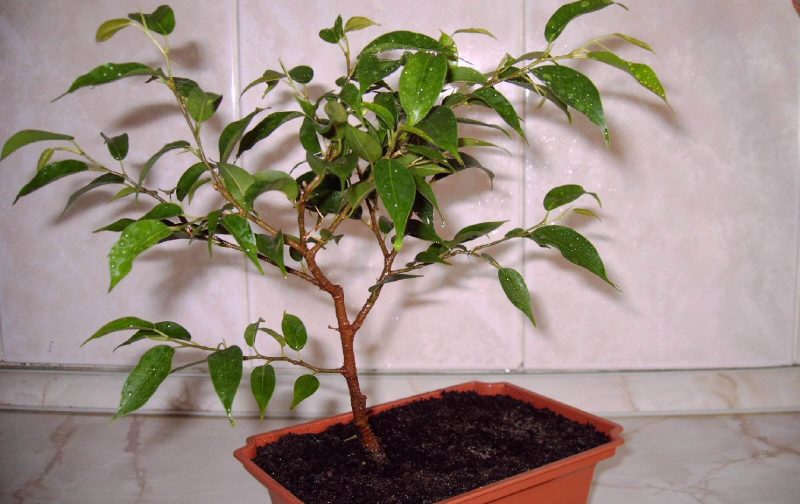
"Natasha" differs from other varieties by slow growth and is suitable for the formation of bonsai.
Ficus tolerates wintering well with standard room temperature. The main thing in winter care is sufficient air humidity, since ficus is a very moisture-loving plant. To create favorable conditions, it is sprayed on leaves from a spray bottle with warm water. In summer, spraying is better daily, and in winter - weekly.
Ideal conditions for keeping ficus
Good conditions for ficus include several aspects of growing - diffused lighting, moderate regular watering, warm indoor air (18 - 25 ° C), timely top dressing and humidity above 50%.
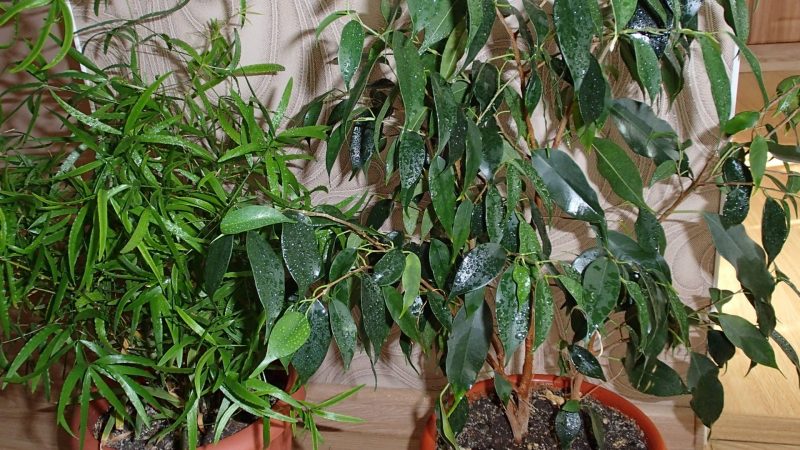
In winter, there are peculiarities of the content depending on the air temperature. However, in any case, it should not fall below 16 ° C. The cooler the less often the ficus is watered.The topsoil should dry between watering to a depth of about 5 cm.
When choosing a location for a plant, you need to consider that it does not tolerate drafts. But fresh air is useful in the summer, so when it’s warm, ficus can be taken out to the balcony, placing it in a corner where it does not blow.
Care for ficus Benjamin Natasha at home
In the spring-summer period, the plant needs to be fed once every two weeks. For top dressing, complex mineral fertilizers or organic-based preparations are used.

Pruning and pinching of the plant are carried out during the period of its active growth - from spring to autumn. In winter, only forced cuts are made if there are sore or dried branches.
After watering, you must always loosen the soil in the pot so that the roots receive a sufficient amount of oxygen.
In winter, the ficus will require more attention, it needs to create sufficient humidity, provide good lighting, adjust the irrigation regime so that the roots do not suffer from waterlogging.
Do I need a transplant after purchase
Immediately after the purchase, a transplant is not needed. The plant is quarantined to see if there are pests or fungal diseases on the new inhabitant of the flower garden. If there are doubts about the plant's health, it is immediately treated with fungicides and insecticides.
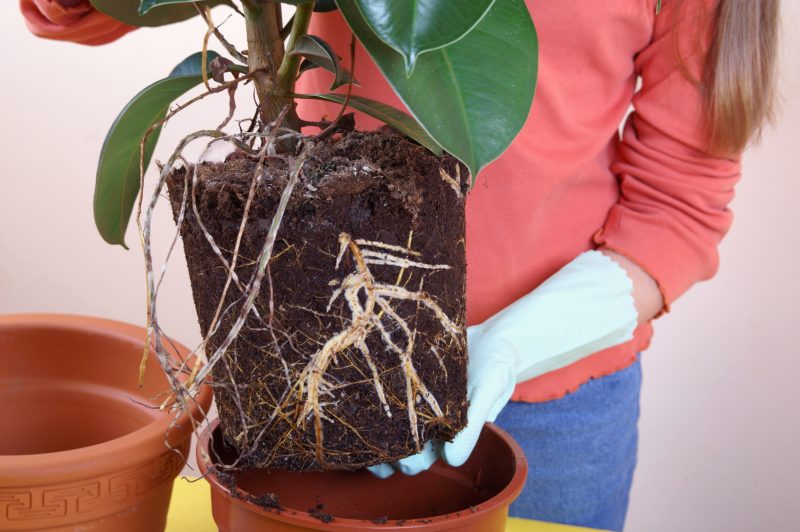
About a month later, when the ficus gets used to the new microclimate of the room, it can be transplanted into new land.
Before transplanting, “Natasha” is abundantly watered - this allows you to extract the plant from the pot without damaging the roots. Then it is transplanted into a new container, where drainage is placed at the bottom and fresh soil is poured (you can buy a special “for ficus”).
If there are doubts about the health of the root system - an unpleasant odor emanates from the soil or the roots behind a lump of earth are not visible at all, it is advisable to brush off the old soil. After, you should rinse the root system under warm running water and cut off all diseased and damaged roots. Having treated the remaining fungicide (for example, “Fitosporin”), plant the plant in fresh soil and a new pot, corresponding to the volume of roots.
Plant propagation methods
Ficus "Natasha" perfectly propagated by cuttings. For grafting, annual shoots of about 10 cm long are suitable. Root them in water or immediately in the soil. In the water with cuttings, you can add several tablets of activated carbon so that it does not deteriorate.
More materials:ficus: reproduction
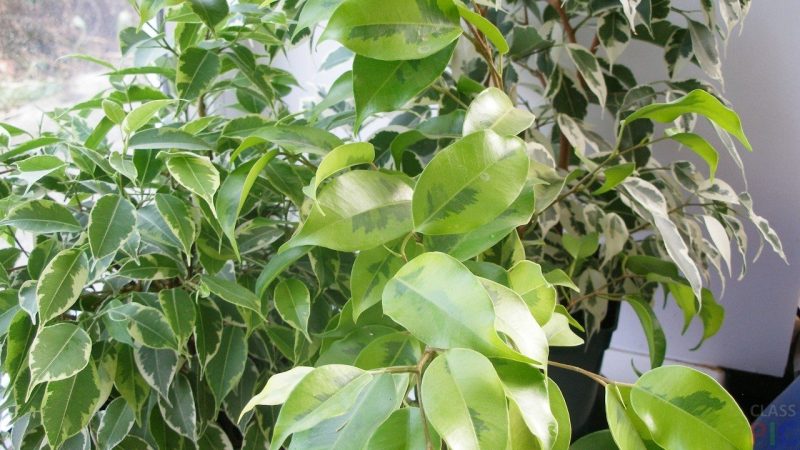
Many gardeners prefer to immediately plant cuttings in the ground, arranging for them a small greenhouse.
Planting cuttings for rooting, process description:
- Cut the cuttings with a sharp clean tool. You can do this at any time of the year, but the growth of ficus is most intense in the spring and in the first half of summer, which means that rooting is always more successful at this time.
- The slice is treated with “Kornevin” or just the sticky white juice is washed off so that it does not clog the pores of the plant.
- The lower leaves on the prepared cuttings are cut.
- In flower pots with a diameter of 8 - 10 cm, drainage and universal soil are mixed with sand or perlite.
- In each pot, one shank is inserted vertically to a depth of about 2 cm.
- From above they are covered with a transparent bag or a glass jar, having previously moistened the soil from the spray bottle.
- Put the stem on the root in a bright, warm place where the air temperature should be at least 20 ° C. Lighting is preferably diffuse, or use shading from 11am to 3pm on the south window.
- Daily seedlings ventilate, opening the greenhouse for 10 minutes. Humidify from the spray as the soil dries.
- Cuttings take root in about three weeks. This is noticeable by the growth of new leaves and faster drying of the earth.
- The greenhouse is removed gradually, accustoming ficus seedlings to the drier air of the room.
Transplant into a large capacity rooted cuttings can be next spring.Ficus "Natasha" is not fast growing, for a year the plant will have time to fill a small planting capacity. Each time, the diameter of the pot is increased by only a couple of centimeters - ficuses do not like "extra" space for roots.
It is interesting:venus flytrap: home care
Pest and Disease Control
Like any other plant, Benjamin's Natasha ficus is susceptible to disease and pest attack. Most often, it is affected by a mealybug, scabbard and spider mite. The plant must be carefully examined to notice signs of the disease as early as possible.
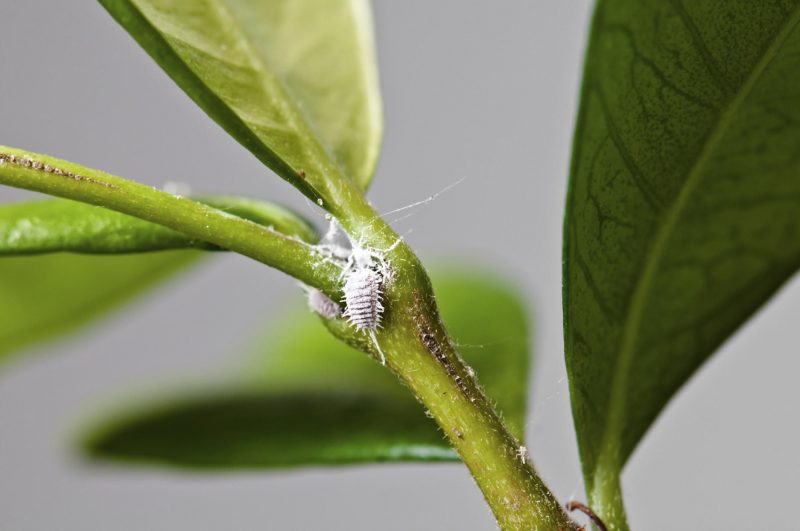
Larvae of insects are removed from the leaves with cotton soaked in alcohol, then the plant is washed under a warm shower, covering the soil with oilcloth.
If there are a lot of insects, they use insecticides, and against spider mites - acaricides.
What problems can the flower grower face?
Ficus problems arise with improper care. The most unpleasant and common - yellowing and falling leaves.
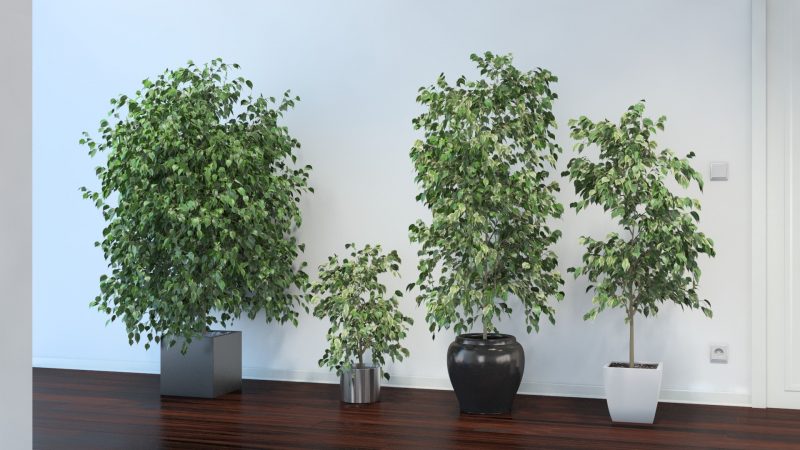
There may be several reasons for this:
- lack of light at high temperatures in winter;
- too rare watering, drying out of the roots;
- too frequent watering, rotting of the roots;
- lack or excess of fertilizers;
- cold draft.
Having noticed the problem, it is desirable to establish its cause precisely in order to correct the deplorable position of the ficus.
Signs and superstitions associated with ficus Natasha
Ficus "Natasha", grown in the form of bonsai, takes on a new meaning depending on the chosen style. It can symbolize a stubborn struggle with the elements, the continuity of generations or calm, or peace.
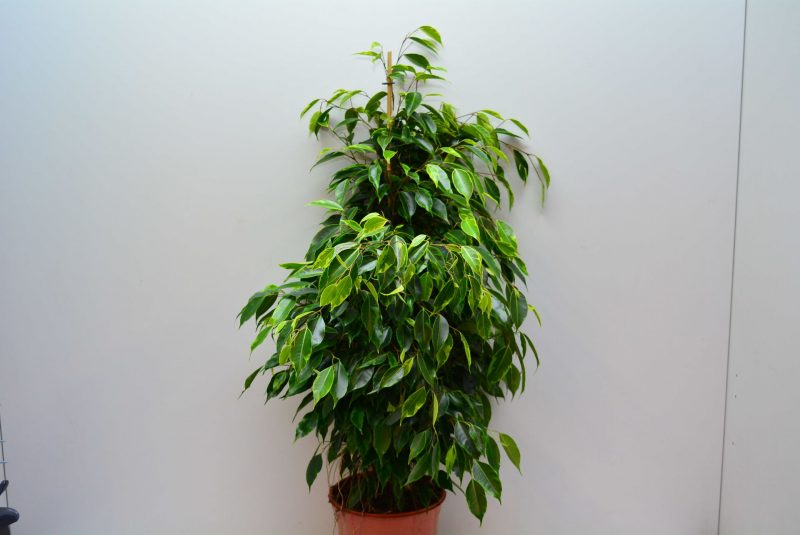
If ficus is grown like an ordinary houseplant, it is often placed in the kitchen. In addition to practical value (this flower perfectly cleans the air and loves high humidity), there is also symbolic. This tree is associated in consciousness with material well-being, wealth and peace in the house.
Read also:how to care for ficus at home












